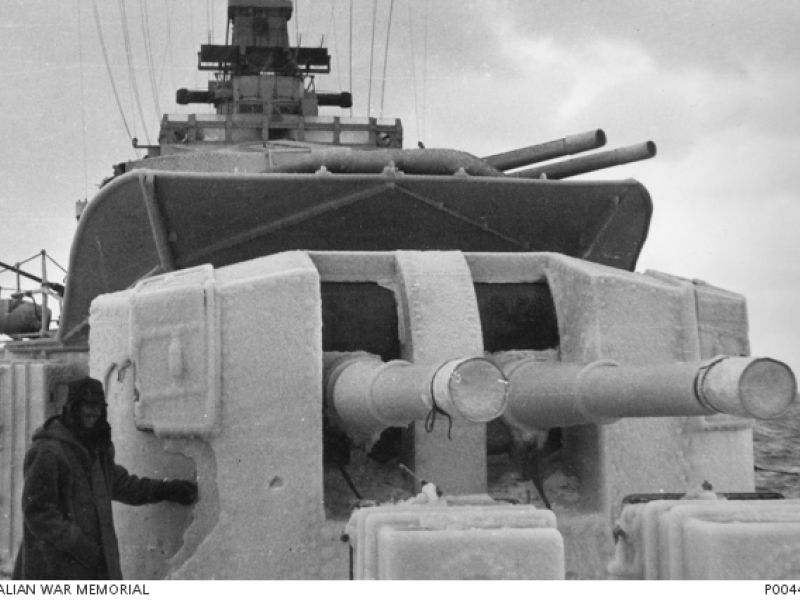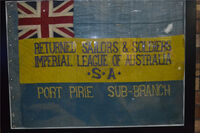H.M.A.S. Battan - A Korean Winter
Able Seaman Gunner Mervin (Merv) Reginald Parker Service Number R/28017, of Duffy Lane, Port Pirie, South Australia joined the Royal Australian Navy in October 1945 at 19 years of age.
He served on H.M.A.S. Bataan during her second tour of duty in the Korean War in a familiar pattern on the west coast of Korea; blockade enforcement, shore bombardment and escort duty.
The 1952 winter in Korean waters brought the chill and biting Siberian winds, heavy seas, snow showers and sub-zero temperatures. Spray breaking over the forecastle turned to snowflakes in mid-air and wherever spray touched the ship it immediately froze. The ships super structure was frozen beneath tons of ice locking the gun mounts and freezing depth charges in their racks. Cordex placed along the main armament gun barrels and detonated from firing circuits, was used to remove ice from the barrels and on some occasions naval guns were operated every ten minutes to ensure they did not freeze up. Many other frozen moving parts on gun mountings had to be chipped off by hand. The inside doors of the upper deck would also ice over in winter.
The thin steel hull in direct contact with freezing sea water combined with the lack of insulation and minimal heating meant that crews had to endure freezing conditions below as well as on deck. Conditions were particularly severe for those in exposed positions, such as open bridges and gun positions. The weather was bleak and squally with temperatures down to -11 degrees Celsius. Snow and ice covered the ships' decks, and sailors lived in cramped and often freezing conditions as their quarters were below the waterline.
In order to maintain what heat could be generated, ships were closed up which meant that the air below decks became stale. Further, the presence of relatively large numbers of crew (The ships compliment was 12 officers and 247 sailors) confined within a small, poorly ventilated space presented a significant risk of the spread of diseases spread by contact or aerosols. This danger was exacerbated by another method; in an attempt to maintain a habitable temperature steam was vented directly into the ship from its boilers. This method provided only short-term relief and temperatures fell rapidly. The resultant high humidity and moisture in crew accommodation areas would have provided an environment very suitable for moulds and other potential disease sources.
There was difficulty in maintaining water and galley fuel to different parts of the ship, owing to the fact that the liquid froze in the pipes. Water pipes to bathrooms, fuel pipes to galleys and the Heads drainage pipes were all affected, even some lagged pipes were frozen.
When Bataan returned to Australia, Able Seaman Merv Parker met his 10 month old daughter for the first time. He discharged from the R.A.N. in April 1957. H.M.A.S. Bataan served longer in Korean waters than any other United Nations naval vessel.
- Sea Power Centre - Australia https://www.navy.gov.au/hmas-bataan

 RSL (Port Pirie Sub Branch) Inc.
RSL (Port Pirie Sub Branch) Inc.